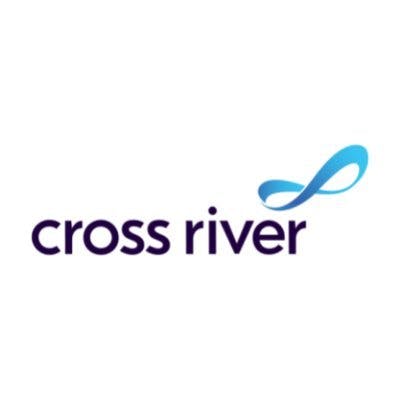Questions
- If we look at the issuer processor market along the dimensions of fast, easy pricing, and scalability, why is Galileo's legacy system slowing them down with speed to market for their FinTech partners. What specifically about their legacy system is slowing speeds to market?
- Marqeta's current enterprise solution serves very large FinTech and other on-demand customers. Why is Marqeta not addressing the downmarket as well? Why are small startups under-served?
- So my current understanding of the value chain is, we have the banking partners who hold the licenses and all the regulatory requirements, they sit at the bottom. And then on top of them, we have the BaaS platforms. And then on the top, they're the consumer-facing FinTech providers and embedded finance players. BaaS is sometimes broken further into a digital enabler layer and an aggregator layer. Please help me to understand, what's the distinction? What's equivalent to i2c and Bond with the names that we're familiar with?
- Is Marqeta where i2c is?
- What is a commodity in this value chain and what is not?
- Could you give some examples please? Who are these companies that have done well there?
- Would the customers of Galileo or Synapse, i2c they switch to a more cloud native platform and how should I think about the costs and risks associated with that?
- So when people are concerned about Marqeta's customer concentration with Square, do you think this concern is less warranted because of the challenge you just mentioned?
- Can we please talk about the unit economics for the issuer processor to facilitate one transaction, in terms of the revenue and interchange and also the cards network fee and issuing bank fees?
- Would it be fair to say for B2B providers, the platform would be able to keep 50 basis points and then their FinTech partners would keep 150?
- Can we please talk about embedded finance and what is the ideal customer mix? Would an issuer processor prefer to grow and scale with these digital native FinTech partners or would they want to onboard non-FinTech partners who want to offer embedded finance?
- If we look at Brex, Brex has got these card processing platform and also has a banking core where they provide a lot of ledger gateway for ACH, Treasury services. In addition to these two business lines, they now also have software services with expense management. Are they ahead of the curve by offering software together with payments? So they would monetize with SaaS in addition to just transaction volume related fees?
Interview
If we look at the issuer processor market along the dimensions of fast, easy pricing, and scalability, why is Galileo's legacy system slowing them down with speed to market for their FinTech partners. What specifically about their legacy system is slowing speeds to market?
Guest: I think because they have a legacy set up, that's not in the cloud yet, the cost of provisioning a new instance for them is pretty significant versus spinning up like a virtual container, virtualized instance. So there are meaningful process and hardware costs to getting a new customer up and running. And that's by design.
Marqeta's current enterprise solution serves very large FinTech and other on-demand customers. Why is Marqeta not addressing the downmarket as well? Why are small startups under-served?
Guest: I think the reason is that they've got their hands quite full just focusing on the enterprise. When you focus on the enterprise, you're able to go really deep with a handful of customers and invest really heavily. The trade-off is that it requires a different product set and company focus to be able to easily onboard, in a safe manner, lots of smaller companies. Because smaller companies often do have fewer requirements, but it's not that they have no requirements. Because the ACVs are lower than Marqeta's, you need to be able to automate and streamline more things versus throwing people at a solution.
Sacra: So more developer-first solution, easy, low-cost onboarding instead of more sales driven.
Guest: Light touch, yes. Like product-led growth, or building ways into the product for customers to help themselves, reducing the support burden. The challenge with downmarket is really, it just comes down to the value of each customer. The ACV is lower. And so you just need to be a lot more efficient.
I think one thing that people forget is, it takes a tremendous amount of organizational bandwidth and focused to keep a Cash App or a Chime happy. Even though, Marqeta is on a relatively modern stack. It's still quite a challenge and so you end up basically having to being pulled as an organization in that direction.
Galileo specifically, because they're still running on a pretty legacy stack. I think the newer companies starting out have the benefit to a point, standing on the shoulders of giants, being cloud-native and building on really modern infrastructure with modern tooling from scratch in many ways. And if you're solving a different type of use case, sometimes actually building from scratch and building a modern system allows you that advantage.
So my current understanding of the value chain is, we have the banking partners who hold the licenses and all the regulatory requirements, they sit at the bottom. And then on top of them, we have the BaaS platforms. And then on the top, they're the consumer-facing FinTech providers and embedded finance players. BaaS is sometimes broken further into a digital enabler layer and an aggregator layer. Please help me to understand, what's the distinction? What's equivalent to i2c and Bond with the names that we're familiar with?
Guest: That's a good question. So another example is Marqeta... You know what's quite confusing about the FinTech space. Companies will compete with each other in certain product categories, but also partner with each other in other product categories.
And so, I would say Unit and Visa DPS is another example here. Visa DPS is owned by Visa and is a competitor to i2c. I think another one that maybe you haven't heard of is Rize. Rize is like Bond and they work with Galileo. Lithic in particular, is more of like i2c and Galileo competitor. But I think what's confusing about a diagram like this, it's accurate and the scenario of Bond is that a neobank or a FinTech company or digital brand can actually go and work directly with i2c without Bond, or they can work with Bond and Bond actually abstracts away the i2c relationship for them, more or less. Does that make sense? But they can't just work with Bond and not work with i2c.
Think about how Bond is a middleware that brings together i2c and other vendors. With Bond, I'm not intimately familiar with Bonds offering, but I'm guessing that with Bond, they're able to bring a card manufacturer, so you don't have to sign another contract with a card manufacturer. Whereas with i2c, if you work with i2c, you are closer to the metal in many ways, but you'll need to then work with a card manufacturer directly. Ends up being a little more work and more contracting.
Sacra: So Bond is the program manager, like Galileo also does the same. They also do this type of groundwork to gather all the documents and licenses in place.
Guest: Yeah, that's correct.
Is Marqeta where i2c is?
The way to think about it is, you have the core processor and that's the bedrock of the system and you can build all these... What bond is doing is rounding out the rough edge. With i2c specifically, there's a lot of rough edges to the customer experience. It's just a very rough system that's not built for self-serve in any way.
And Bond isn't a self-serve company either. But Bond is kind of smoothed out because they experience a lot when working with i2c. Marqeta sits in the position of i2c, but has built a more modern and smoother experience. So they're starting to expand out a little bit.
Another example actually, now that I think about it is for credit cards, thinking about Deserve and Marqeta. So Deserve sits in where Bonds is sitting and Marqeta is sitting where i2c is sitting.
What is a commodity in this value chain and what is not?
Guest: Well, that's an interesting question. I would argue that everything in this value chain is a commodity. I'm not sure that there is a single thing here that's not a commodity. There's just a question of what's harder to do.
I tend to think getting core transaction processing right, is a very technically demanding and challenging problem. It is effectively a distributed systems problem that's just technically very challenging. And relatively few companies have really owned that piece of technology and had done it really well at a high scale.
Could you give some examples please? Who are these companies that have done well there?
Guest: Well, I think Marqeta is very classic example. At the core, what they've done is they've done transaction processing. They've built their ledger... They're able to handle real scale as evidenced by their growth and their customer base. I think to a certain extent what Galileo and i2c and Lithic have built are pretty hard to replicate as well.
I do tend to think that banking as a service middleware is valuable in the near term. I guess I question in some ways is, how long-term defensible it is. Although to flip that around, the banking service companies own the customer effectively, or have a closer relationship with the customer and that's really valuable. So you have to balance... If you're providing things like the pipes that is... Sometimes the pipes are hard to build, but not sure where the value truly appears.
If you're working with Bond, you don't necessarily need a direct contract with i2c. That would feel like the value of a Bond. And so Bond under the hood theoretically, could swap out i2c. I think in practice that ends up being very, very difficult. So they're probably quite beholden to i2c.
Would the customers of Galileo or Synapse, i2c they switch to a more cloud native platform and how should I think about the costs and risks associated with that?
Guest: Switching processing platforms is exceptionally delicate and challenging because you need to, especially as at scale, you're moving hundreds of millions or billions of dollars in transaction volume. And so every minute of downtime is like a really, really meaningful thing.
So when you're making that switch in the core system, you're risking hours of downtime, which is an unacceptably large amount of downtime as you are doing large-scale volumes. So it's quite challenging to truly move platforms. I think a lot of the digitally native players are betting that by building this more modern infrastructure they are capturing future potential versus necessarily doing a rip and replace of large scale clients on incumbent players.
So when people are concerned about Marqeta's customer concentration with Square, do you think this concern is less warranted because of the challenge you just mentioned?
Guest: Absolutely. I think it's obviously not ideal because Square has tremendous pricing power over Marqeta, but in terms of churn risk, unless Marqeta is really messing things up, I think it's quite a low risk. Square, I think, would just probably much rather... Moving processors, it's going to require their best engineers. I'm sure they would rather have people focusing on different things than ripping out a system that's working fairly well.
Can we please talk about the unit economics for the issuer processor to facilitate one transaction, in terms of the revenue and interchange and also the cards network fee and issuing bank fees?
Guest: Okay, starting from the topline, it will depend on the classification of the card, but broadly speaking for consumer card products, the debit interchange is around 135 basis points. There's a sticker price that's I think like 165 basis points, but I think in practice, that comes out to 135 or so basis points. And that'll depend on your transaction mix type, what percentage of your transactions are card not present, what percent are groceries, what percent is gas station.
There are certain types of purchases where the interchange take rate is lower. And so round number is 135 topline for a consumer. For a commercial or a B2B card, the interchange is usually around, call it 240 to 250 basis points.
Sometimes it may be a little higher if you're in one of the really high-end classifications, then again, there's that variance there because of the mix of card transactions on specific to a program, or let's say, 135 and 250 for the commercial side.
Out of that, I think your card networks, there's some variance here again, because it varies so much by transaction type and mix. But I think they'll take something on the order of 50 basis points and tiers down and get rebated over time as you hit more scale.
I'll go to the bank first. The bank will start out quite high and that will be anywhere from 20 or 30 basis points. And then they'll tier down over time. The bank gets very compressed. I think if you look at Marqeta, Sutton, that's on the order of two or three basis points. And so it starts very high and just gets compressed down. Probably it starts actually lower than 30, maybe like 20 basis points or so is where the bank usually starts. And it'll go down to like two or three.
Let's see, oftentimes the processor will take a cut too and the program manager will take a cut. And there's probably the most variance there. We're looking at probably 25 to 30 basis points as well. So, I think what you see here is like between the different players here. There's oftentimes not a ton of margin left for the FinTech company until they get to true scale.
Sacra: So just to recap, if we take a B2B as an example, so we start with 250 basis points for the income range and of which say 20 basis point is paid to the issuing bank and then say 30 basis point is paid to the card network. So we're leaving with 200 basis point. And then these 200 basis point is split between the base. So the banking-as-a-service platform and FinTech partner.
Guest: Yep.
Sacra: So then these 200 basis points I looked at Marqeta's disclosure, it seems Marqeta's take rate is 45 basis point. And this has been trending down from 70 basis points back in 2019, which then if we use like 200 then minus 45, this implies, the FinTech partners Klarna, are DoorDash, Square, they will have 155 basis point out of the whole interchange.
Guest: Yeah. I think that seems about right. The one tweak I'll make there is because their largest customer is Square and it's a consumer card, you're probably wanting to start at 135 basis points topline, and then the margins get a little tighter.
And I will also add that part of the reason why a market take rate has been trending down is probably because, for consumer cards, the margins are just tighter and they're able to command less of a... Just economically, they just can't command as much.
Would it be fair to say for B2B providers, the platform would be able to keep 50 basis points and then their FinTech partners would keep 150?
Guest: That's probably feasible at scale. I think the network fees are probably the big one that there's a lot of variants on. I think you mentioned, you said, "20 or 30 basis points." And I think it probably ends up being higher than that.
Can we please talk about embedded finance and what is the ideal customer mix? Would an issuer processor prefer to grow and scale with these digital native FinTech partners or would they want to onboard non-FinTech partners who want to offer embedded finance?
Guest: I think it actually is a pretty efficient market and that there's more growth in FinTech companies, but they're also more complex to service and to support. You end up with like a lot more moving pieces than some of the embedded finance players.
Ideally you probably have a mix to build the optimal customer portfolio. But I actually think, just in terms of complexity of servicing and ACV, it ends up being pretty efficient.
If we look at Brex, Brex has got these card processing platform and also has a banking core where they provide a lot of ledger gateway for ACH, Treasury services. In addition to these two business lines, they now also have software services with expense management. Are they ahead of the curve by offering software together with payments? So they would monetize with SaaS in addition to just transaction volume related fees?
Guest: I think Brex is a really interesting company in that they... the way I think about it is that they operate at a different level of the stack, but they've built out more of their own proprietary technology. They've become much more vertically integrated, than a lot of the other folks in the space, if I compared to them.
I think that offers them a comparative advantage on competing in the expense card space and the business banking space. But I don't think that they're really competing at all in the banking service space. The use cases are just dramatically different. You would never go to a brand to issue cards through Brex.
But I think that is an interesting question around... Dropbox famously built its own data center infrastructure. And there's a question, was that the right use of their best and brightest? Sure, they save on margin versus relying on AWS and other folks. So I don't know, I think the wisdom of that decision is so TBD but they've become more vertically integrated, which is pretty cool.
Disclaimers
This transcript is for information purposes only and does not constitute advice of any type or trade recommendation and should not form the basis of any investment decision. Sacra accepts no liability for the transcript or for any errors, omissions or inaccuracies in respect of it. The views of the experts expressed in the transcript are those of the experts and they are not endorsed by, nor do they represent the opinion of Sacra. Sacra reserves all copyright, intellectual property rights in the transcript. Any modification, copying, displaying, distributing, transmitting, publishing, licensing, creating derivative works from, or selling any transcript is strictly prohibited.
 Nan Wang
Nan Wang
















